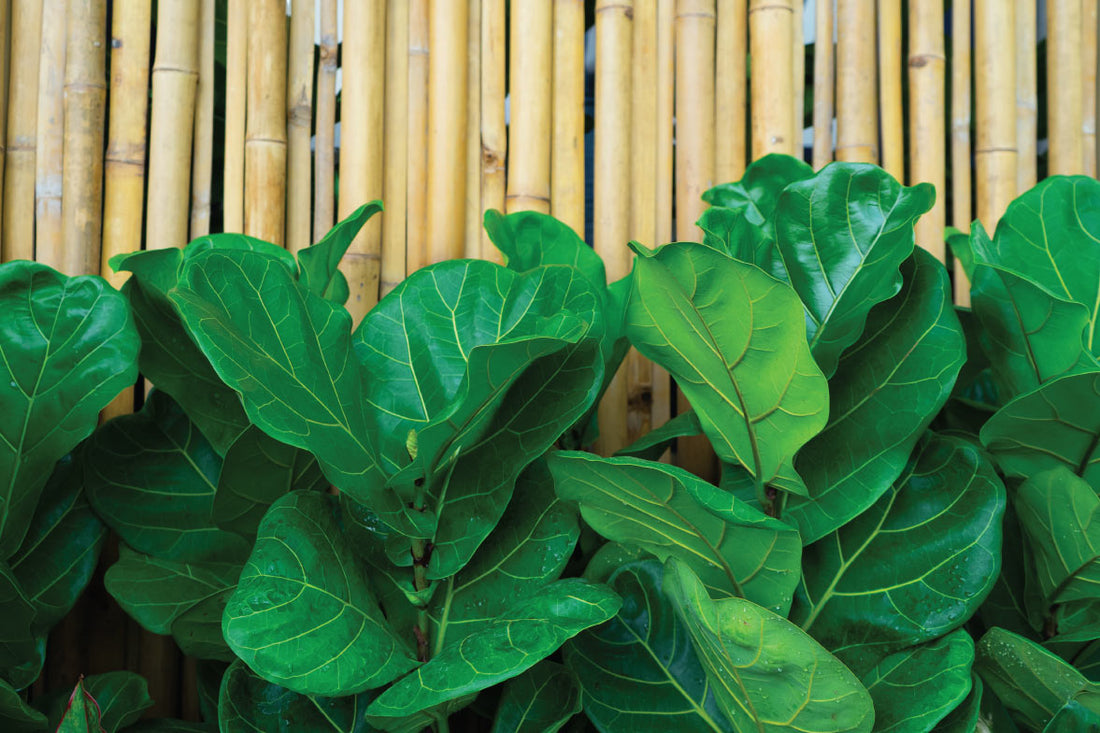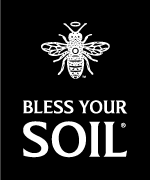
The Fiddle Leaf Fig Tree, or Ficus lyrata, is a striking plant featuring large, waxy leaves. It's a joy to see these plants reach towards the ceiling with vibrant foliage. However, you may find yourself wondering if your tree is dying. Chances are, even if it looks like it's dying, it's likely just struggling.
This plant is notorious for its so-called finicky nature, but with the right knowledge, you can prevent the common issues that lead to browning, yellowing, dropping, or dying leaves.
Here's how to save your fiddle leaf fig and return it to the lush state it had at the nursery or garden store.
If your fiddle leaf fig looks like it's dying, you can bet it's one of these easily remedied causes: Not enough light, too much moisture in the soil, dry or cold air drafts, or not enough food.
Reasons Your Fiddle Leaf Fig Tree is Struggling and How to Save It
1. Hydration issues: Dry air or irregular watering
The Ficus lyrata is a tropical, moisture-loving plant. It grows best in humid climates with regular drenches. In-home trees can be bombarded with dry air from air conditioning and heaters, or we can simply let too much time pass before watering. Over time, your ficus leaves will brown or crack.
How to identify lack of moisture:
Recognizing signs of insufficient moisture is key to maintaining a healthy FLF. Here are clear indicators:
-
Dry or cracked brown spots on leaves: These are common signs that your plant is experiencing or has experienced severe dehydration. Sorry, these leaves won't heal.
-
Drooping or downward-pointing leaves: In less severe cases, leaves may droop or point downwards, instead of reaching up towards the light, indicating the need for water. This too, is typically not reversible.

Solution
No, you don't need to turn your home into a sauna or keep it soggy. Just keep your houseplant away from air vents that blow hot or cold air—they really hate the drastic changes in temperature, too. If you're in a dry climate, consider a spritz of distilled water to the foliage once or twice per week. A humidifier may also be a practical companion to the area. You may also look into increasing your watering frequency. Don't allow the soil to stay dry for too long.
In drastic circumstances, a dried up FLF will in fact die. You can attempt to save it by pruning back the damaged growth and ensuring better care and attention.
2. Moisture stress: Watering too often
One of the biggest, most common mistakes people make is over-watering their plants in general. The best practice is to wait until the potting soil is almost completely dry before drenching it with water. We like to wait until the top 60% of soil is completely dry. While your ficus loves moisture, it doesn’t want to be sitting in soaked soil all the time. Overwatering will cause disease and result in an unhealthy tree in general.
How to tell apart a dying tree from a moisture-stressed tree:
Identifying the health issues of a tree is crucial for timely intervention. Here are the key differences between a dying tree and one suffering from moisture stress:
-
Brown spots on leaves: A common indicator of moisture stress.
- If you observe large spots on mature leaves, it signals a significant issue, potentially leading to the tree's decline.
- Small spots on new leaves suggest edema, a condition often resolved by decreasing watering frequency. These spots should disappear as the leaf matures.

Solution
Moisture stress can be detrimental to your FLF. Follow these steps to ensure your plant receives the ideal amount of water:
-
Space out waterings: Allow the soil to dry between waterings. It's crucial that 60-80% of the soil becomes dry before you water again. Depending on the soil and environment, this is usually between 7-14 days.
-
Check soil moisture with the Chopstick Method:
- Insert a clean wooden chopstick deep into the soil of the planter.
- Leave it for a few moments, then pull it out.
- Examine the chopstick: Dry soil will leave little to no residue on the chopstick, indicating it's time to water. If the chopstick shows signs of moisture (with soil sticking to it), wait a bit longer before watering.
This simple technique helps you water your FLF just right, promoting healthy growth and avoiding moisture stress. Of course, if you happen to have a soil moisture meter, this is a great way to detect the moisture conditions down deep in the plant pot.

(Note: This is not the solution if your fiddle leaf has developed root rot. In this case, more measures must be taken to remove the decaying matter.)
Read: Water Like You Mean It: Eye-Opening Tips for Watering Your Plants
3. Wrong amount of light: Inefficient or excessive
Bright, indirect light is key for these plants. If you have direct, filtered light, that's even better. Your fiddle leaf fig tree wants to live in the Goldilocks zone of sunlight and that's often hard to provide indoors which is where most people end of having complications.
Signs Your FLF isn't getting enough light:
- Leaning: The plant is stretching towards the light source, indicating it's not receiving adequate light.
- Small leaves: Underdeveloped foliage is a sign that your FLF needs more light.
- Leggy: In the effort to get towards the bright light, your tree may appear to have large gaps between leaf nodes.
Signs of excessive light:
- Burned spots on leaves: Look for large, crispy areas, often in the center of the leaf where sunlight is most concentrated. These burned spots are clear indicators of too much direct sunlight.
Solution
Place your ficus near a window that gets bright filtered light all day long, or at least 6 hours per day. If a lot of direct sunlight is cast on your tree, consider hanging sheer curtains to diffuse the light. If natural, warm light is limited, consider supplementing with an artificial grow light.
4. Improper drainage: Wrong potting soil or planter
Planter without drainage holes:
If your planter doesn't have drainage holes for the water to escape, your plant is going to die eventually. Period. Decorative pots are notorious for not having drainage holes. This is easy to spot, just look under the pot.
Choosing the right potting soil:
Selecting the appropriate soil is vital but can be complex due to the vast array of options available. The wrong choice can compromise your Fiddle Leaf Fig’s health, primarily because many soils designed for indoor use retain too much moisture or include slow-release fertilizers not suited for your plant.
Signs you’ve chosen the wrong potting soil:
- Presence of fungus or mold: Observing fungus or mold on the soil surface is a clear indicator of excessive moisture retention.
- Persistent moist soil: If the soil remains wet for extended periods or takes a long time to dry out, it’s likely not the ideal choice for your plant.
The best soil for an indoor Fiddle Leaf Fig plant is a well-draining, sterile mixture. Avoid premixed indoor potting soils, or soils containing wood (forest) materials.
Avoid premixed, pre-fed soils that may be inappropriate for this species of plant, especially if housed indoors. Also, your tree should be in a planter that allows water drainage. Soggy roots are a death sentence for these plants.
Solution
If your plant is in a liner pot, make sure to remove it from the decorative pot prior to watering. If your plant is directly in a decorative pot, look for drainage holes at the bottom. If you don't see any holes, drill some or replace it with a planter that has some.

If potting soil is your issue, consider replacing it with a sterile mixture. We always use a homemade potting mix blend of 30% coco coir, a moisture-retention material, and the remaining amount in an aeration materials such as perlite, pumice, horticultural charcoal, sand, or akadama. We love coco coir more than peat moss because its an eco-conscious material that helps hold nutrients and moisture while allowing for airflow to the roots. As a bonus, it will help your plant resist pest infestations and soil diseases. In fact, this potting mix recipe makes the perfect growing substrate for most indoor plants.
5. Not enough nutrition
To grow big and strong, your fiddle leaf fig needs a properly balanced plant food. Look for a plant food (fertilizer) with a 3-1-2 NPK ratio plant food (but we don't mean literally 3%,1%, 2% values). Constant, gentle nutrition with Fiddle Leaf Treats®, a urea-free plant food, works perfectly for this leafy tree.
Identifying nutritional deficiencies:
Just as people show signs of malnutrition, so do plants. Here’s how to spot a fiddle leaf fig that’s lacking in nutrition:
- Stunted growth: The plant fails to reach its full size or grows at a slower rate.
- Pale or yellowing leaves: Indicates a deficiency, particularly in nitrogen.
- Small leaves: New leaf growth will be remarkably smaller than previous leaves.
- Weak or thin stems: A sign the plant isn’t getting enough support from nutrients.
- Leaf drop: Premature dropping of leaves can be a distress signal from lack of essential nutrients.

Read: What does 3-1-2 NPK really mean?
Solution
To counteract nutritional deficiencies and support healthy growth, incorporate Fiddle Leaf Treats® Plant Food into your care routine:
-
Optimal Nutrition: Fiddle Leaf Treats™ is formulated specifically for fiddle leaf figs, featuring a perfect 3-1-2 NPK ratio of macronutrients in robust values. This balance is essential for the overall health and vigor of your plant.
-
Gentle and Effective: Unlike common fertilizers, Fiddle Leaf Treats™ is urea-free, reducing the risk of burning and over-fertilization.
-
Organic Kelp Extract: The inclusion of organic kelp extract provides your fiddle leaf fig with additional growth-promoting substances and trace minerals it Loves—yes, with a capital "L".
-
Superior Value: Opt for Fiddle Leaf Treats® dry food over liquid alternatives. It’s not only more economical but also provides higher levels of NPK without the risk of spoilage or dilution.
Resilience of Fiddle Leaf Fig Plants
It's important to note that fiddle leaf fig plants, although finicky, are remarkably resilient. You can often remediate the soil and roots, and even drastic measures like cutting them back to the trunk can result in healthy regrowth under the right lighting, temperature, and care conditions. With proper care, these plants can bounce back from dying and various stressors and thrive once again.





1 comment
Love the input on fig tree 🌴